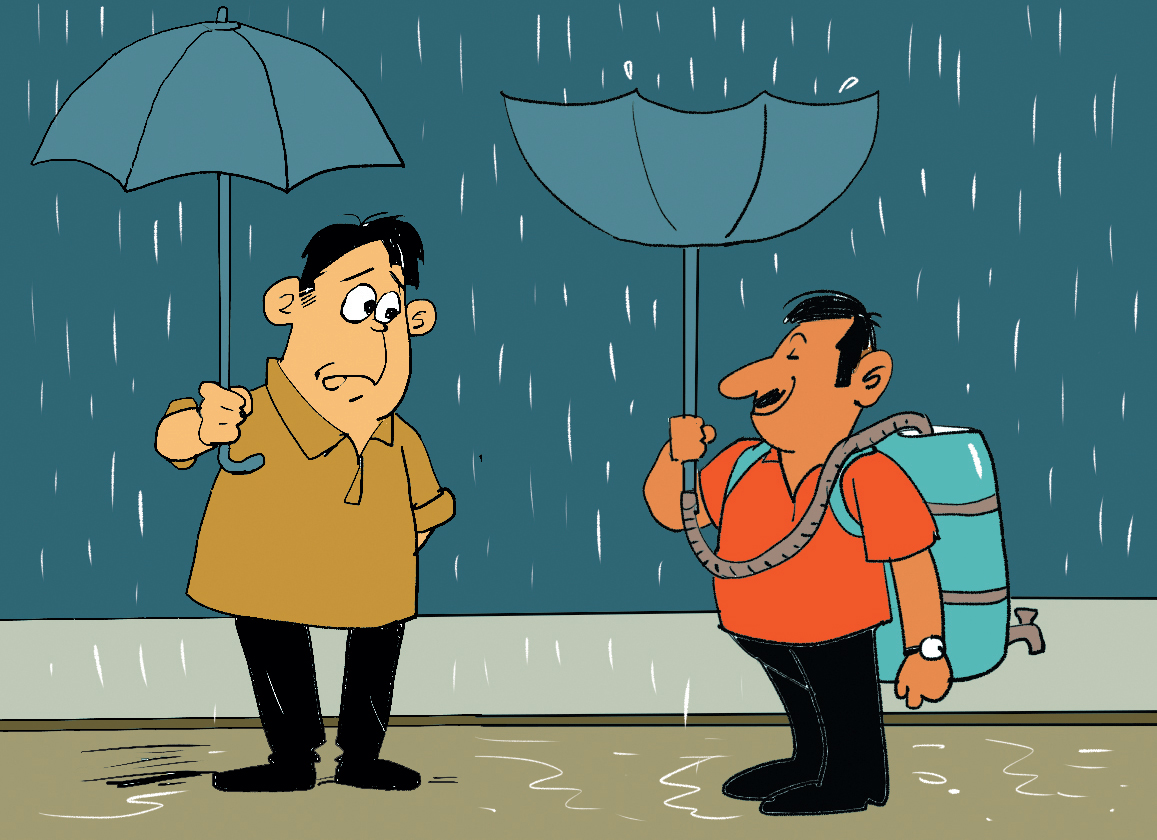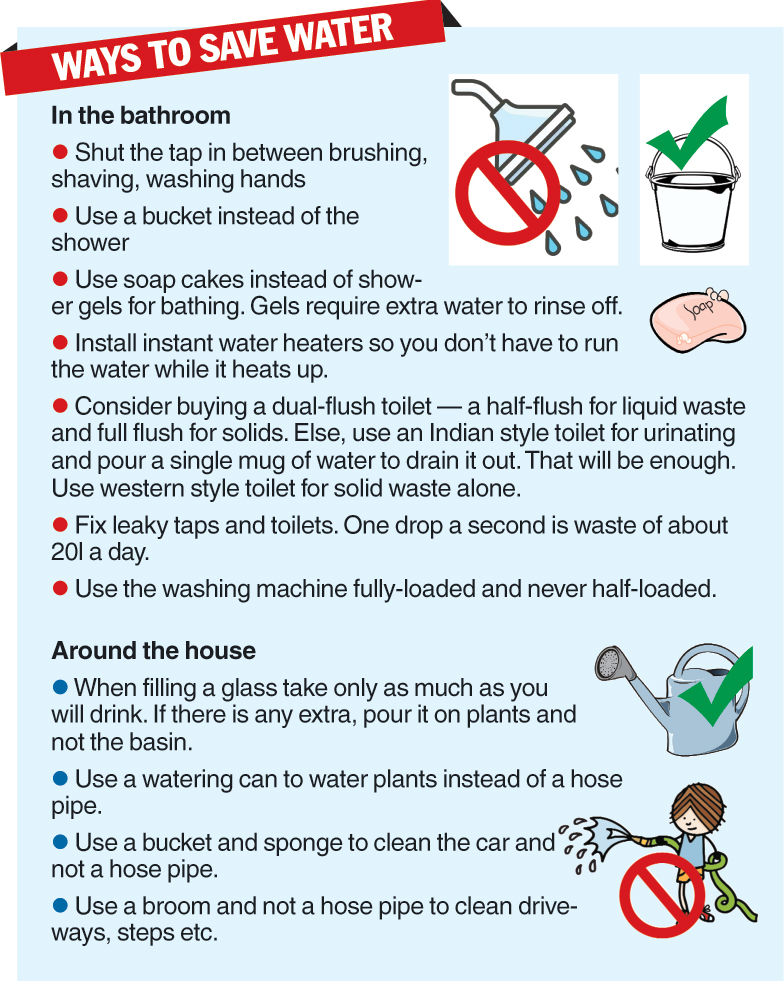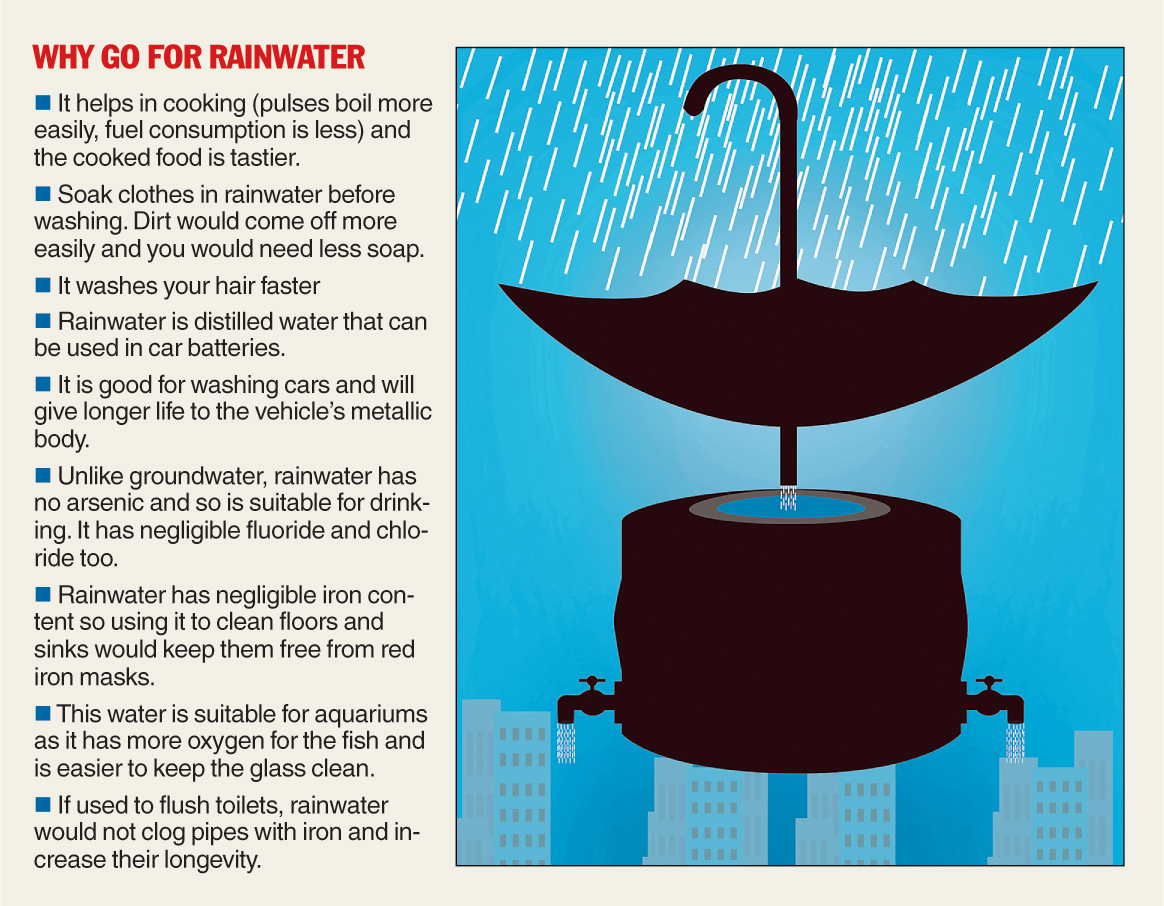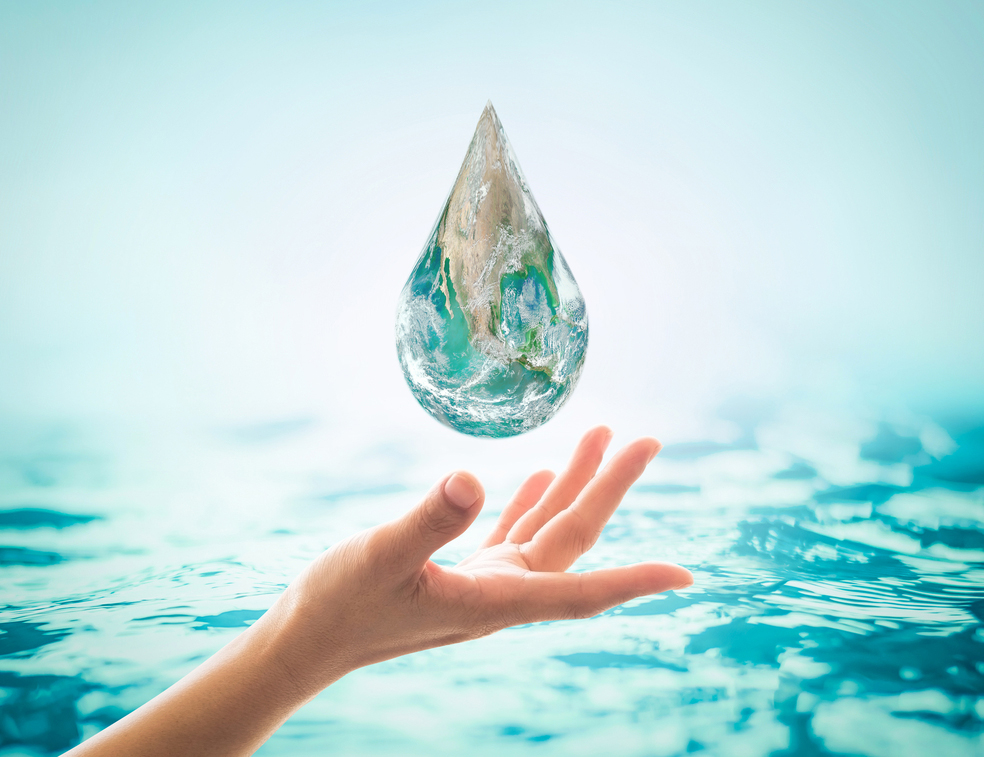Did you know that a building near IA Market has been recycling rainwater and using it to flush their toilets for the last 13 years? Or that an FC Block resident has been purifying rainwater at his house and drinking it for 11 years?
The Association of Engineers, India (AEI) runs the exemplary building at IA 11 and their principal and council member S. K. Nag has gone a step further to make rainwater collected at his house fit for drinking.
The institute had held a panel discussion on rainwater harvesting at their campus where the audience comprised students curious to learn the technology.
On the panel were Nag, president Chittaranjan Haldar and assistant secretary Malay Kumar Acharya. The objective of the discussion was to show that we can all replicate these systems at home. This is what The Telegraph Salt Lake learnt-
What is rainwater harvesting?
It is a system of collecting rainwater to use later.
I get water on my tap; why should I consider rainwater?
Because of the impending water scarcity. The Composite Water Management Index report of Niti Aayog 2018 says that 21 cities are racing to zero groundwater levels by 2020, affecting 100m people. The International Water Management Institute says that by 2025, when world population exceeds 800 billion, all available sources of sweet water will be exhausted. Surface and groundwater resources are getting depleted due to population explosion. What will you drink then?
Is rainwater useable? Is it safe for consumption?
Water can come from rivers, underground or rain. River water can be purified like at the Palta Water Works and sent to us but it is common to see dead animals floating in rivers. Chemical effluents are dumped into it, the pipes can have leaks leading to outbreaks of diarrhoea in certain neighbourhoods…
As for ground water, people have been drawing it out for so long that their levels have depleted to dangerous lows.
Rainwater is now the best resort for a city like ours. It is pure, soft and free from pollutants, salts, mineral etc. Not only will it reduce our dependence on treated potable water that is expensive but it will also reduce the amount of storm water flowing into drains and prevent flooding on our streets.

Onkarnath Bhattacharya
How can I do it at home?
Your roof is a good catchment area. If the roof is clean, the collected water will be cleaner than if it was collected from the ground. That water would have got mixed with debris, plastic, leaves, pollutants etc.
What equipment would I need?
Your roof already has the basic requirements — a pipe that collects water and takes it to the ground (known as downtake) and a drain cover at the mouth of this pipe.
All you have to do is retro fit the downtake pipe and connect with the gutter pipe. Clean water will be directed to a storage tank and the first flush will be emptied into the ground below.
What is first flush?
This is the first 10 minutes of rain that contains impurities in the atmosphere. Do not send this water into the storage tank.

How much water can be harvested?
Calcutta has an annual average rainfall of 1,500mm. A flat roof’s collection efficiency is about 80 per cent so even if you use 100sqm, you can harvest 1,20,000l annually.
On an average, a person needs about 7l of water for cooking and drinking. So in a family of five, the daily consumption would be 35l.
Assuming an average of 200 non-rainy days in a year, annual consumption of the family is expected to be 7,000 litres. So even after consumption, you would still have excess to send for groundwater recharge (details below).
For non-potable water one can continue to depend on the corporation’s supply lines.
So this water can be drunk?
You can use the water for cleaning, cooking, drinking... Rainwater falling through the atmosphere may pick up pollutants from the air but it is passed through a filter in the storage tank where UV rays kill bacteria. In any case, you should test the water every three months to ensure it is within permissible limits.
What about maintenance?
Once the system is installed, cleanliness is the only maintenance needed. The roof, filter and storage tank need to be cleaned thoroughly before monsoon.
What about the cost?
It is difficult to say as the system is site-specific but Nag, who has set up such a system at his FC Block home, invested Rs 10-12,000 on it.
If there is excess water collected, can I use it for artificial recharge?
Yes. Natural recharge of water happens best in meadows, when rainwater lying on the grass gets absorbed back into the ground. But in urban India, most rainwater falls on metalled roads and is drained into canals, rivers and finally the sea. Very little manages to seep into the soil so it up to us to recharge the ground artificially. You can make a recharge pit for the water to be sent back to the ground.

Who do I call to get the system installed at home?
The AEI provides consultation for free, after which you will need a plumber and PVC pipes to start. The institute is also keen to organise awareness programmes at the community level or two-day training programmes for groups of 10 or more at their IA 11 Block address. They shall also teach anyone interested in doing business in this line.
Residents are also welcome to visit the prototype that is in use at the institute.
Call 23359466, 46023723 for details.
Have you started storing rainwater or saving water in any way?
Write to The Telegraph Salt Lake, 6 Prafulla Sarkar Street, Calcutta 700001 or email to saltlake@abpmail.com










